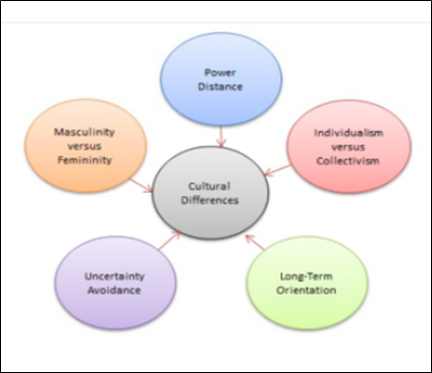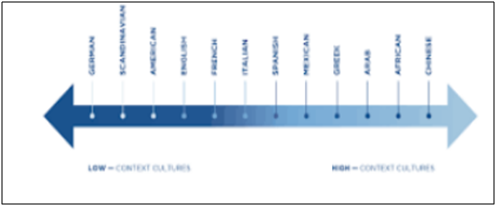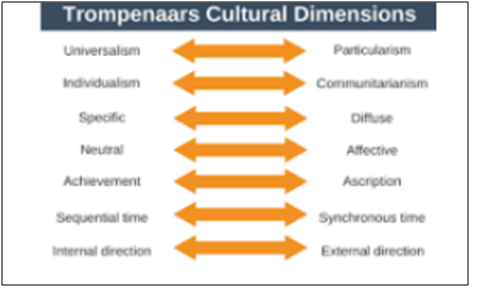Marketing Assignment: Critical Evaluation of Cross-Cultural Analysis Techniques
Question
Task: The marketing assignment is an individual piece of work that requires you to evaluate the literature on the subject of Cross-Cultural Analysis (CCA) techniques, considering that all the mainstream techniques still referred to today originate from the largely pre-digital and lesser- globalised era of the 1980s.
Answer
Introduction
The purpose of this particular report on marketing assignment is to evaluate how a diverse strategy for cross-cultural evaluation and learning development in the context of social and cultural differences can be achieved (Raza, Hasnain and Khan, 2018). The marketers employed approaches for comparing the marketplace and consumer behaviour across various countries and cultures in the functioning sector. Hall and Hall (1987), Trompenaars (1993), Wills et al (1991) and Hofstede (1984, 1994) are strategies listed in this specific report. Moreover, both conventional approaches are even now applicable in today’s globalised sphere, taking into account the cross-cultural evaluation technique. Global markets are transforming and nations must consider both domestic culture and the host nation culture. Therefore,Culture is regarded an essential component of change because it helps organisations to grow their global presence by recognizing what is applicable in their community and standard of living. Thus, the following report analyses the cross-cultural analysis techniques that are generally relevant from the largely pre-digital as well as the lesser globalised era of the 1980s.
Critical evaluation of the three cross-cultural Analysis Techniques
As stated by Taras (2017), ‘TheHofstede’s 1980 model of cultural dimensions’ seems to be a very important explanation since it was the primary aspect in reasonable cross-cultural governance. Besides, it may not be a great achievement in host nations to recognise that there are cultural differences and home approaches. The environment in which firms relate to purchasers is profoundly changed by digital techniques along with digital media.Gerard HendrikHofstede is essentially a Dutch social psychologist, recognized for advanced research and evaluation in intercultural communities as well as businesses. His research has been primarily directed at IBM staffSaleem and Larimo (2017). He was strongly convinced of the six different aspects of national culture. In order to better understand the cultural changes across different nations and the frameworks to conduct operations through different cultures, he has also established this specific model. The Six factors that usually describe culture are listed below.
According to the research of Roy (2020), the first factor generally includes the Power Distance Index. It is evident that Power distance generally includes how individuals within societies are aware that less powerful members of society anticipate and embrace the unfair distribution of authority and power. In Hofstede, it is the belief that everyone holds a place and requires no reason when pursuing a hierarchical order. Within nations with little control, individuals would likely balance the distribution of resources and power inequalities need justification(Karibayeva and Kunanbayeva, 2018).
Countries like China and Egypt, therefore, have high power distance index. The second aspect of national culture usually includes Collectivism vs. Individualism. Individualism is often seen as the importance of other members of society and the inclination to only take into consideration of themselves and their families. In addition, collectivism is also seen as a family model in society, which can expect people to look after their friends or relatives. Countries like the United States are likely very familiar with individualism since they want everybody to take good care of themselves. The third aspect further includes the Uncertainty Avoidance Index (Arshad and Ibrahim, 2019). The high avoidance index of uncertainty includes a society in which people do not even prefer to take chances and consider protection and security in their daily lives. Greater nations often advocate self-interest rather than community interests.
The fourth aspect includes Femininity vs. Masculinity. The theory of Hofstede has shown that roles are very different in different countries; for purposes of poor emotions which involve more tough decisions, men are considered effective for the group. Femininity could also be called compassionate and cooperative. Nations such as Japan are regarded to be a male country, but countries like Sweden are regarded hugely feminine. The fifth aspect includes Short-term vs. Long-term orientation. The Uncertainty Avoidance includes how people react with vagueness to a culture. Countries with high levels of confusion ensure behaviour; opinions and unorthodox thoughts are indeed intolerant (Arshad and Ibrahim, 2019). Such countries often need a variety of policies to limit uncertainty. Nations with low uncertainty Avoidance is expected to have a very relaxed view, where practice is deemed beyond morality, uncertainty tolerance is acknowledged and the criterion for restricting vagueness is marginal. The final aspect includes Restraint vs. Indulgence. It is seen that the Indulgence aspect is usually included new in the framework (Enkh-Amgalan, 2016). This aspect applies to the extent to which people seek to control their instincts and urges, considering the way they were originally elevated. In addition, cultures would be viewed as restrained or indulgent. Indulgence is a society, which encourages rudimentary and natural human desires associated with living to be satisfied comparatively freely. Furthermore, restraint is seen as a society that efficiently enforces and regulates fulfilment by way of severe social expectations.

Figure 1: Hofstede’s model of cultural difference
(Source: Taras, 2017)
Edward T.Hall theory
According to the statement of Watson (2017), Edward T.Hall was greatly renowned for developing the contexting model of cultural communication (1976). According to the American anthropologist Edward T. Hall, individuals communicate in diverse cultures and act in various ways. Words are very important as a means of communication in some cultures, whereas nonverbal communication is much more common in other cultures. In non-verbal communications, a person utilizes a range of body languages such as kinesic gestures (hand and arm), communication distances (proxemics) and contact with the eye (oculesics). Contact behaviour (haptic), facial gestures and paraverbal communication, including voice volume, silence usage and talk overlap, differ from culture to culture. In particular, he focused on high-context and low-context recognition within cultural communications (Bai, 2016). He established the pattern of culturally mediated communication, which interpreted how individuals decode messages based on cultural needs and aspirations across diverse nations. High context culture is probably extremely holistic while it is likely to be linear in term of the way of thought in the case of a lower context. Hall claimed that cultures could easily be matched with HC cultures through extremely LC. It is evident that Hall is usually noted for the three principal categories of cultural differences that include space, context and time.

Figure 2: Edward T.Hall theory
(Source: Bai, 2016)
Trompenaars’ model of national culture
According to the statement of ten Broeke (2016),the structure of Trompenaars simply relates to a cross-cultural communication model for standard and business management. This specific design reflected an improvement in the Hofstede model, but not every aspect could be justified. These have around 15,000 candidates in its database. Few were even interested in the cross-cultural training program of the researcher. The rest of the workforce comprised 30 different firms in 50 different countries. Essentially, there are five classes, along with how people handle the environment and time of one another. Therefore, the seven dimensions of Trompenaars cultural dimension includes ‘Universalism vs. Particularism’, ‘Individualism vs. Communitarianism’, ‘Specific vs. Diffuse’, ‘Neutral vs. Affective’, ‘Achievement vs. Ascription’, ‘Sequential vs. Synchronic’ and ‘Internal vs. External control’.

Figure 3: Trompenaars’ model of national culture
(Source: Broeke, 2016)
Wills et al (1991) model
According to the statement of Zhao, Teng and Wu (2018), the model of Wills et al (1991) is generally used for analysing the culture of the ‘People’s Republic of China’ for drawing the indication of the suitability of e-learning strategies generally. Wills et al (1991) view learning as an integral part of their cultural model. The proportions of Learning, or 'diffusion' is supposed to consider a cross-cultural model which suggests a link between the high or low culture context and the level of adaptation of new products (Wills et al 1991). Products per se are not necessarily taken into account here, but are an education service. Thus, if the e-Learning site serves the needs of its users, one can anticipate it to expand quickly, which implies that there are a relatively high number of visitors or repeated visitors. Then, the age of this research is acknowledged and more is used as an indicator for e-learning in China then as a driver.
Comparison of the key perspectives
In order to evaluate the culture of the country, the model innovated by Hofstede is important. Its cultural aspects of CCA are criticised since they require obsolete survey methods. It can be considered a mistaken tool for culture estimation. In fact, for IBM, which is outdated over recent periods, this perspective is only limited. Hofstede, on the other hand, claimed that Trompenaars’ theory undermined his database (Karibayeva and Kunanbayeva, 2018). He also claimed that Trompenaars’ dimensions were related to his model. Concerning a list of assumptions relating the work of Hofstede, Turner &Trompenaars (1997) decided to alter their theory. According to the statement of Taras (2017), the approach of Hofstede focuses on analysing the cultural identity variables, which are much more different than Trompenaars and Hampden-Turner as they rely on the cultural process. The model of Trompenaars does not recognise personal behavioural characteristics. The model demonstrates cultural differences but does not describe how to interact with cultures.
Conversely, the five dimensions listed by Hofstede can be said to be more reliable than Trompenaarsdirectly (Enkh-Amgalan, 2016). It will help managers to coordinate the functionality and to set the actions in the very same way. The model tends to deny any specific set of universe values. It contributes to understanding the broader and wider social and cultural scale by incorporating modern technologies into the organisation in order to include cross-culturalism.
Relevance and Conclusion
In conclusion, Hofstede’s model offers instructions for examining national culture, but in certain fields, it lacks scope comparison with other scientists like Hall, Wills and Trompenaars. The later criticises the model of each other, for instance, the research procedure. However, in the analysis, it shows that cultural differences are essential and cultural differences can be combined and can lead to competitive advantages for companies involved in globalisation. This study also explains how to evaluate national culture. Trompenaars and the framework of Hampden-Turner offer a tool or context for employees who handle cross-cultural relations to consider values and beliefs. This gives companies seeking to calculate its basic guidelines and assurance. Overall, models operated to help people understand cross-culture, as they led to the development of the world today via guidance, but while the guidelines have been already laid down, it is still important to understand whether these strategies are applicable to a society of the 21st century, because the world is evolving and many countries have adapted to innovations.
Reference
Arshad, I. and Ibrahim, Y., 2019. Uncertainty avoidance, risk avoidance and perceived risk: A cultural perspective of individual investors.
Hasanuddin Economics and Business Review, 3(1), pp.21-33.
Bai, H., 2016. A cross-cultural analysis of advertisements from high-context cultures and low-context cultures. English Language Teaching, 9(8), pp.21-27.
Davidov, E., Schmidt, P., Billiet, J. and Meuleman, B. eds., 2018. Cross-cultural analysis: Methods and applications. Routledge.
Enkh-Amgalan, R., 2016. The Indulgence and Restraint Cultural Dimension: A Cross-Cultural Study of Mongolia and the United States.
Karibayeva, B. and Kunanbayeva, S., 2018. Kazakh power distance dimension in business discourse. Social Semiotics, 28(2), pp.286-296.
Raza, S.H., Hasnain, A. and Khan, S.W., 2018. Cross-cultural evaluation of the mediation of attitudes in the relationship of cultural values and behavioral reactions toward web-based advertising.South Asian Journal of Management Sciences, 12(1), pp.1-24.
Roy, D., 2020. Formulation of Hofstede’s Global Cultural Dimension Index (HGCDI): A cross-country study. Marketing assignmentJournal of Transnational Management, pp.1-30. Saleem, S. and Larimo, J., 2017.Hofstede cultural framework and advertising research: An assessment of the literature. In Advances in Advertising Research (Vol. VII) (pp. 247-263). Springer Gabler, Wiesbaden.
Taras, V., 2017. Cultural dimensions, Hofstede. The International Encyclopedia of Intercultural Communication, pp.1-5.
tenBroeke, K., 2016. American and German Culture.A comparison by using one aspect of Trompenaars' model of culture.Anchor Academic Publishing.
Watson, O.M., 2017. Edward T. Hall, innovator of the term, defines proxemics as ‘the study of. Social Encounters: Contributions to Social Interaction, 68, p.34.
Zhao, H., Teng, H. and Wu, Q., 2018. The effect of corporate culture on firm performance: Evidence from China. China Journal of Accounting Research, 11(1), pp.1-19.












